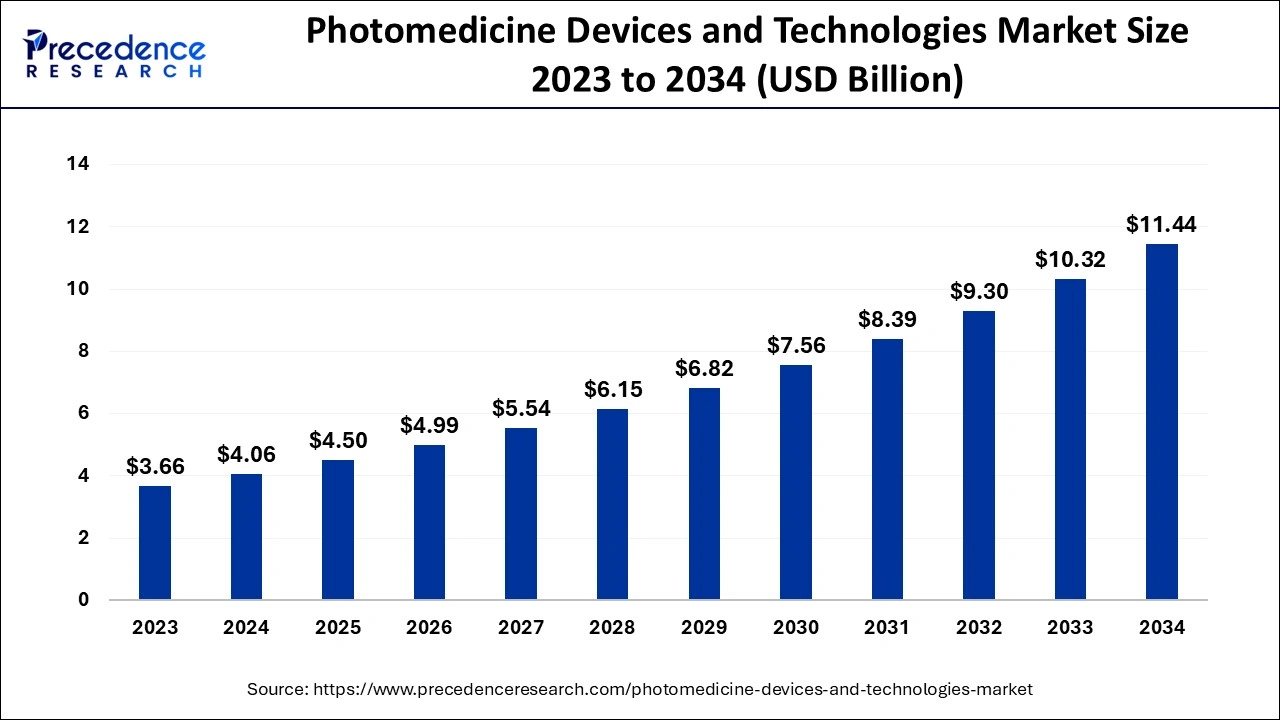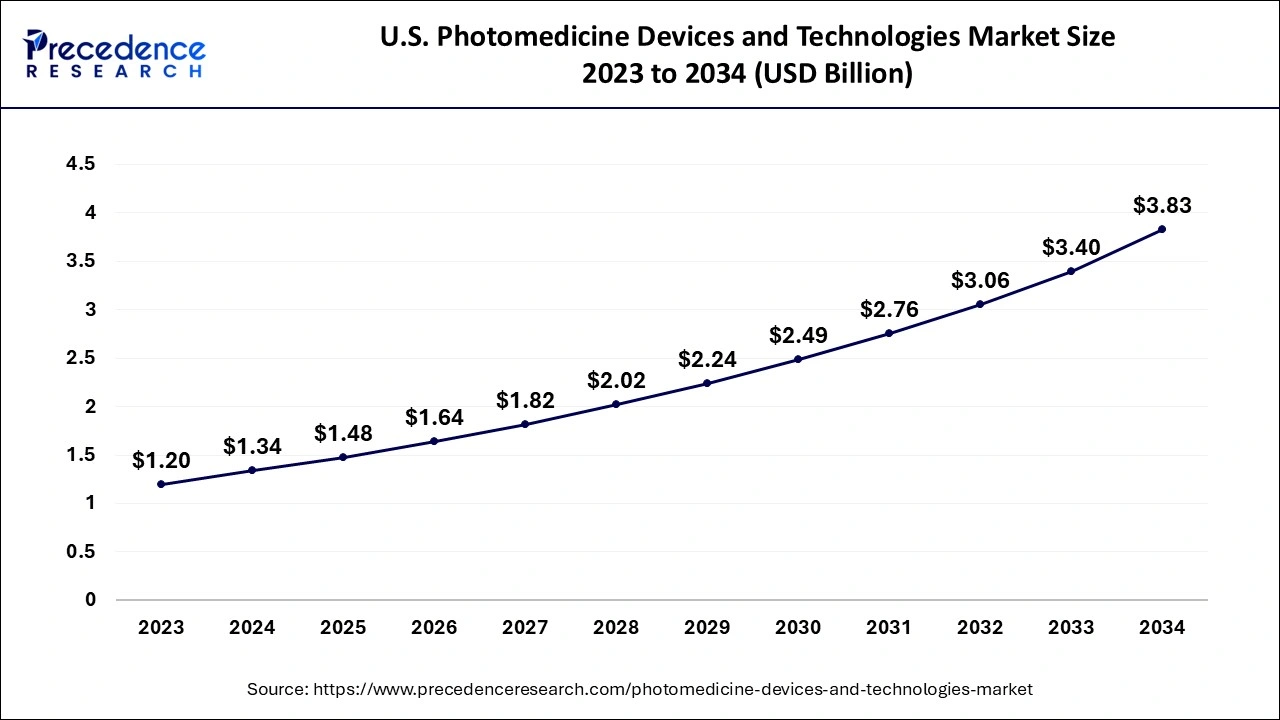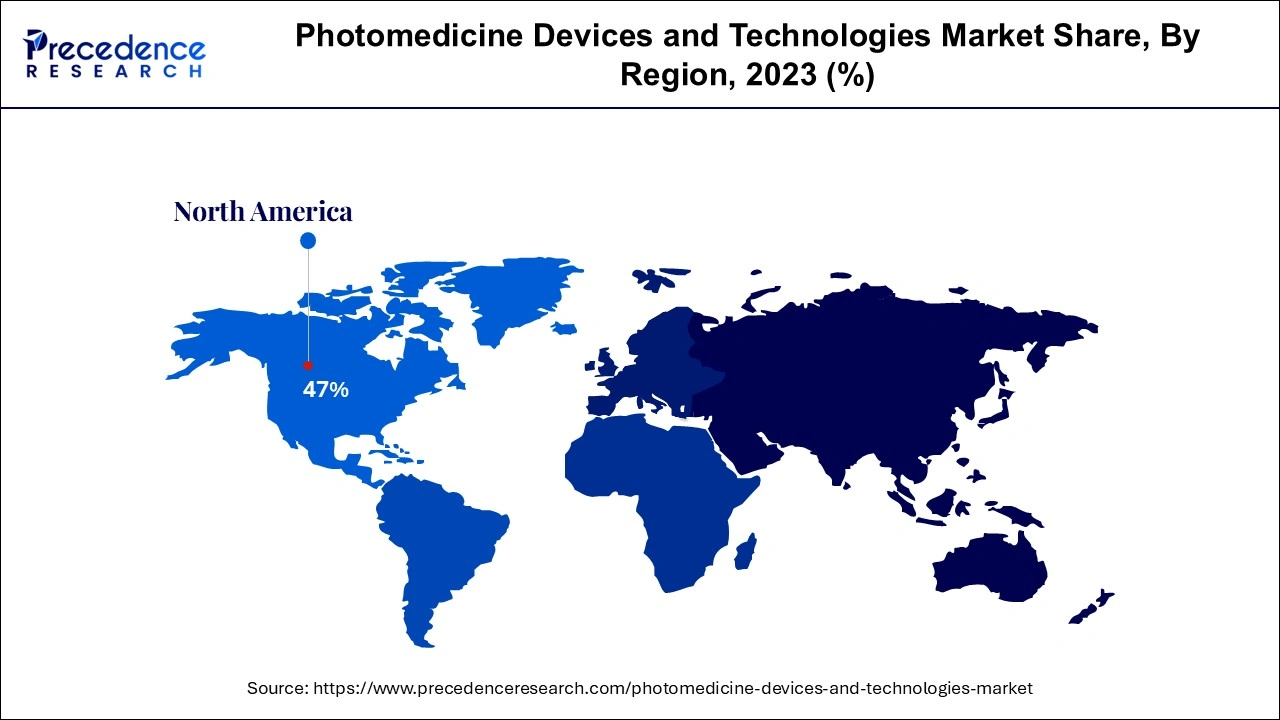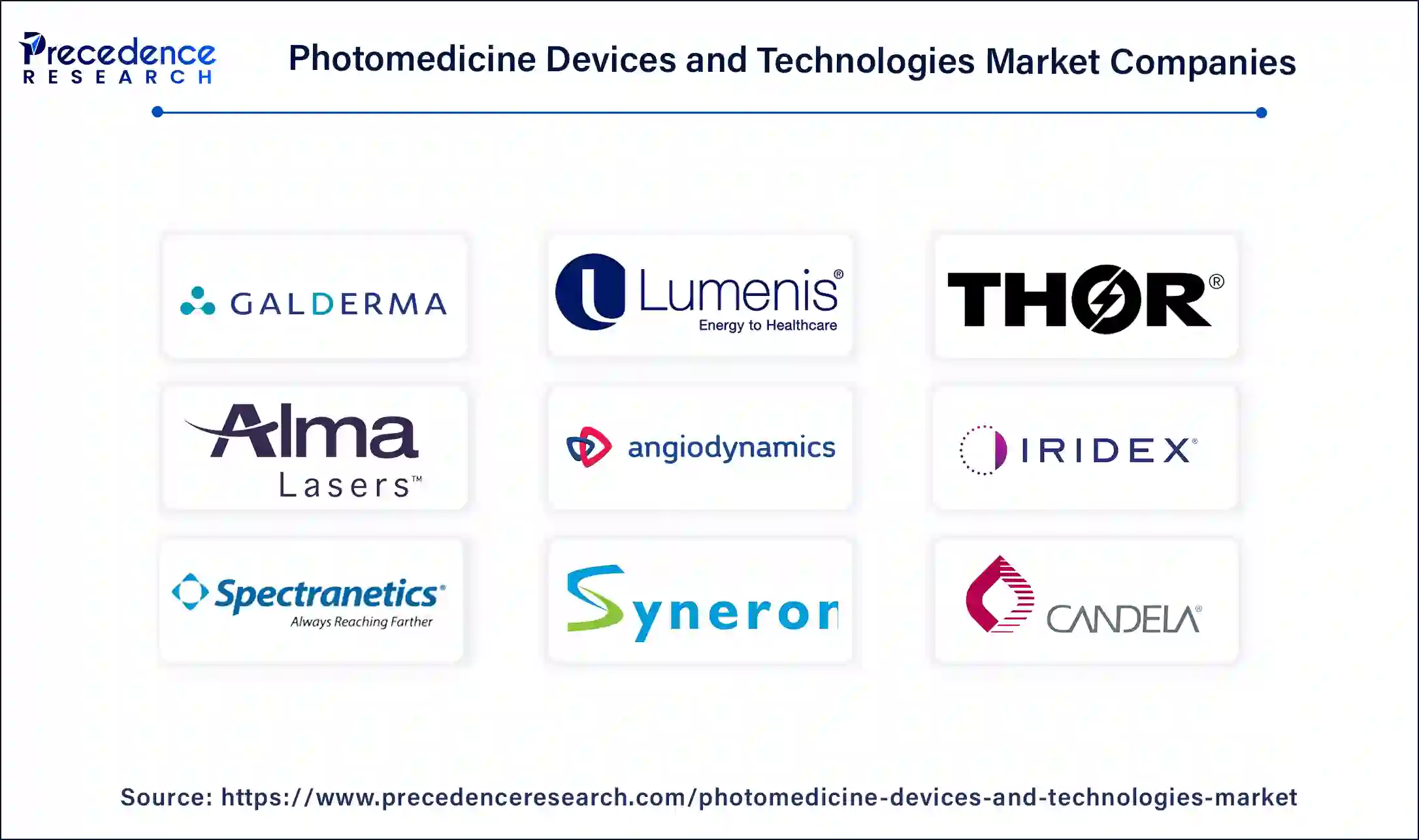April 2025
The global photomedicine devices and technologies market size is calculated at USD 4.06 billion in 2024, grew to USD 4.50 billion in 2025 and is predicted to surpass around USD 11.44 billion by 2034, expanding at a CAGR of 10.92% between 2024 and 2034. The North America photomedicine devices and technologies market size accounted for USD 1.91 billion in 2024 and is anticipated to grow at a fastest CAGR of 11.01% during the forecast year.
The global photomedicine devices and technologies market size accounted for USD 4.06 billion in 2024 and is anticipated to reach around USD 11.44 billion by 2034, expanding at a CAGR of 10.92% between 2024 and 2034. Rising cases of vision correction surgeries are the key factor driving the photomedicine devices and technologies market. The rising prevalence of cancer, along with the R&D initiatives by market players.

The U.S. photomedicine devices and technologies market size is estimated at USD 1.34 billion in 2024 and is expected to be worth around USD 3.83 billion by 2034, growing at a CAGR of 11.12% between 2024 and 2034.

North America dominated the photomedicine devices and technologies market in 2023. The dominance of the segment can be attributed to the higher awareness levels coupled with the attractive reimbursement policies. Rising investment from private & public organizations for R&D to sustain the development of innovative photomedicine devices. Furthermore, the increasing trend in cosmetic and aesthetic procedures is fuelling the demand for photomedicine technologies in the region.

Asia Pacific is anticipated to grow at the fastest rate in the photomedicine devices and technologies market over the projected period. The segment's growth can be driven by rising healthcare investments and encouraging government policies facilitating new cutting-edge product development. Moreover, there is a surge in medical tourism, as patients are increasingly seeking standard and cost-effective photomedicine treatments.
The photomedicine devices and technologies market is the field that utilizes light-based technologies for identifying and treating medical conditions. It involves key players that make light-based equipment for medical facilities that utilize photomedicine for treatment and research organizations that explore innovative techniques. Some of the applications of photomedicine include oncology, ophthalmology, dermatology, and pain management.
Global men skin cancer statistics 2022
| Rank (men) | Country | Number of cases |
| 1 | United States of America | 60,762 |
| 2 | Germany | 11,667 |
| 3 | Australia | 10,902 |
| 4 | United Kingdom | 10,170 |
| 5 | France (metropolitan) | 7,880 |
| 6 | Italy | 7,325 |
| 7 | Canada | 6,434 |
| 8 | Russian Federation | 5,223 |
| 9 | Brazil | 4,958 |
| 10 | China | 4,402 |
Role of AI in the Photomedicine Devices and Technologies Market
AI-driven medical devices can process vast amounts of data with high speed and precision, enabling medical professionals to make more firm treatment and diagnostic decisions. Furthermore, by providing personalized treatment plans according to each patient's reports and preferences, AI-powered medical devices have the ability to transform personalized medicine, which can lead to better patient care.
| Report Coverage | Details |
| Market Size by 2034 | USD 11.44 Billion |
| Market Size in 2024 | USD 4.06 Billion |
| Market Size in 2025 | USD 4.50 Billion |
| Market Growth Rate from 2024 to 2034 | CAGR of 10.92% |
| Largest Market | North America |
| Base Year | 2023 |
| Forecast Period | 2024 to 2034 |
| Segments Covered | Product, Technology, and Regions |
| Regions Covered | North America, Europe, Asia-Pacific, Latin America and Middle East, & Africa |
Rising prevalence of skin diseases
The growing prevalence of chronic conditions and skin disorders is increasing the scope of the photomedicine devices and technologies market. Skin disorders like acne, psoriasis, and skin cancer affect millions of people across the globe. Hence, phototherapy, part of photomedicine techniques, is emerging as a notable therapy for various illnesses. Additionally, photomedicine is also gaining traction in the diagnosis of chronic pain.
Risk of adverse effects
Photomedicine devices and technologies market services can trigger side effects in certain patients, like scarring, pain, thermal damage to tissues, and skin discoloration. These effects can rely on factors such as treatment duration, wavelength, operator technique, and skin type. Moreover, the cost of buying advanced light-based systems including PDT equipment and IPL devices.
Increasing adoption of non-invasive procedures
There is a surge in demand for the photomedicine devices and technologies market products as they offer minimally invasive and impactful aesthetic solutions. Also, many market players are obtaining government permission for the best treatment options that can be utilized for several aesthetic operations like tattoo removal and hair removal. Furthermore, benefits associated with laser surgery, including painless procedures, quicker recovery times, and shorter hospital stays, can also promote the adoption of non-invasive procedures.
Rise of people suffering from vision impairments
Ophthalmological concerns are outgrown as the rise in the number of people suffering eye-related issues as an effect of natural causes like prolonged use of computers and television. Aside from the photomedicine devices and technologies market, there is also growth in dermatological disorders like acne and psoriasis, coupled with the surge in dentistry treatments.
The dermatology segment dominated the photomedicine devices and technologies market in 2023. The dominance of the segment can be attributed to the high number of dermatological procedures performed in tattoo removal, hair removal, and laser skin resurfacing. In addition, the use of cutting-edge body contouring devices along with fat removal procedures using radiofrequency & infrared are further boosting the segment's growth. Also, the growing utilization of dermatologic applications, including skin rejuvenation surgeries, is gaining popularity.
The oncology segment is anticipated to grow at the fastest rate in the photomedicine devices and technologies market over the forecast period. The growth of the segment can be credited to the rising elderly population across the globe, which can directly lead to a surge in the number of cancer patients. In oncology, segment photodynamic therapy is gaining traction in the diagnosis and treatment of numerous diseases, such as skin cancers like actinic keratosis and cell carcinoma. Moreover, the growing efficacy and adoption of PDT in oncology treatment have made it a leading solution within the market, providing less invasive therapeutic options to patients.
The laser technology segment dominated the photomedicine devices and technologies market in 2023 and is anticipated to retain its position during the projected period. The dominance and growth of the segment are driven by the increasing use of laser technology in treatments of arthritis, cardiovascular diseases, cancer, and immunology. The accuracy and versatility of lasers have made them a primary choice among medical professionals and individuals searching for targeted solutions. Additionally, laser technology is increasingly being used in the treatment of diabetic macular edema, driving the market growth.

Segments Covered in the Report
By Product
By Technology
By Geography
For inquiries regarding discounts, bulk purchases, or customization requests, please contact us at sales@precedenceresearch.com
No cookie-cutter, only authentic analysis – take the 1st step to become a Precedence Research client
April 2025
January 2025
January 2025
February 2025